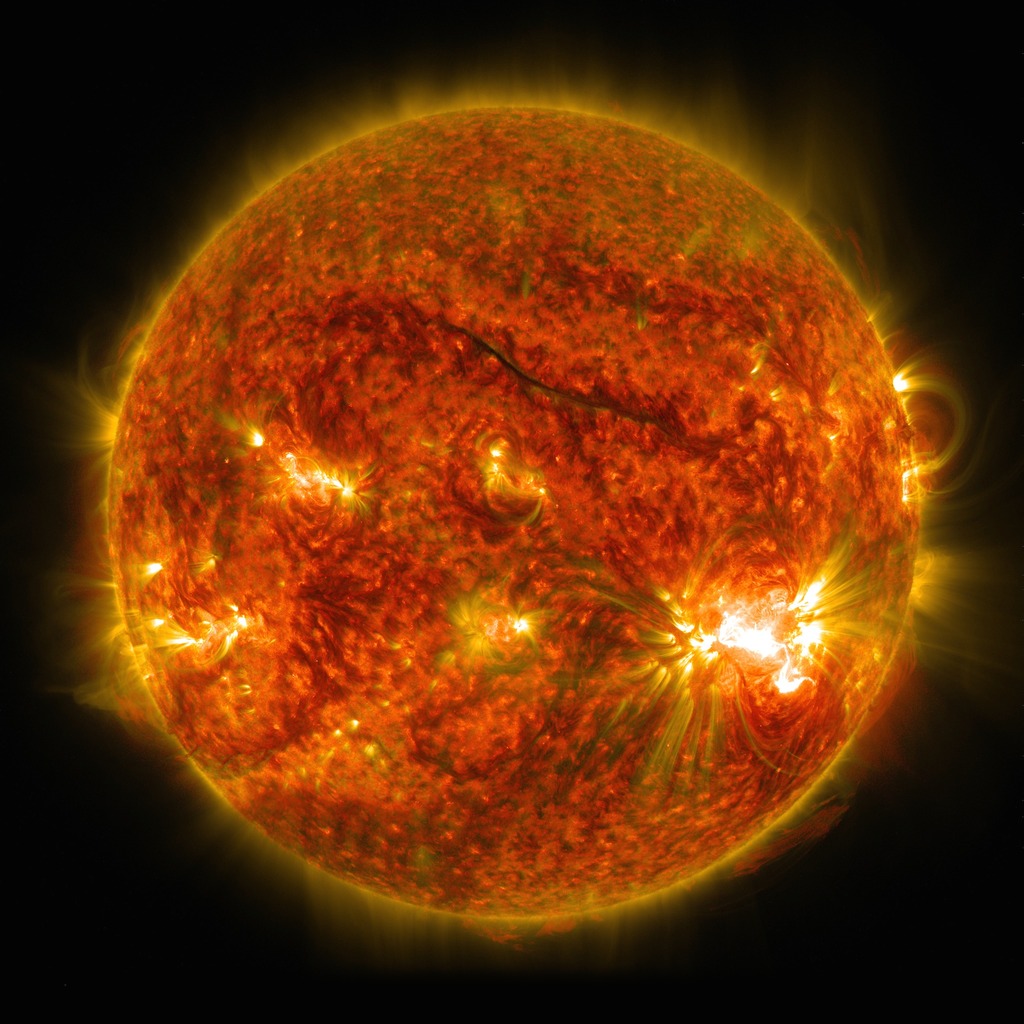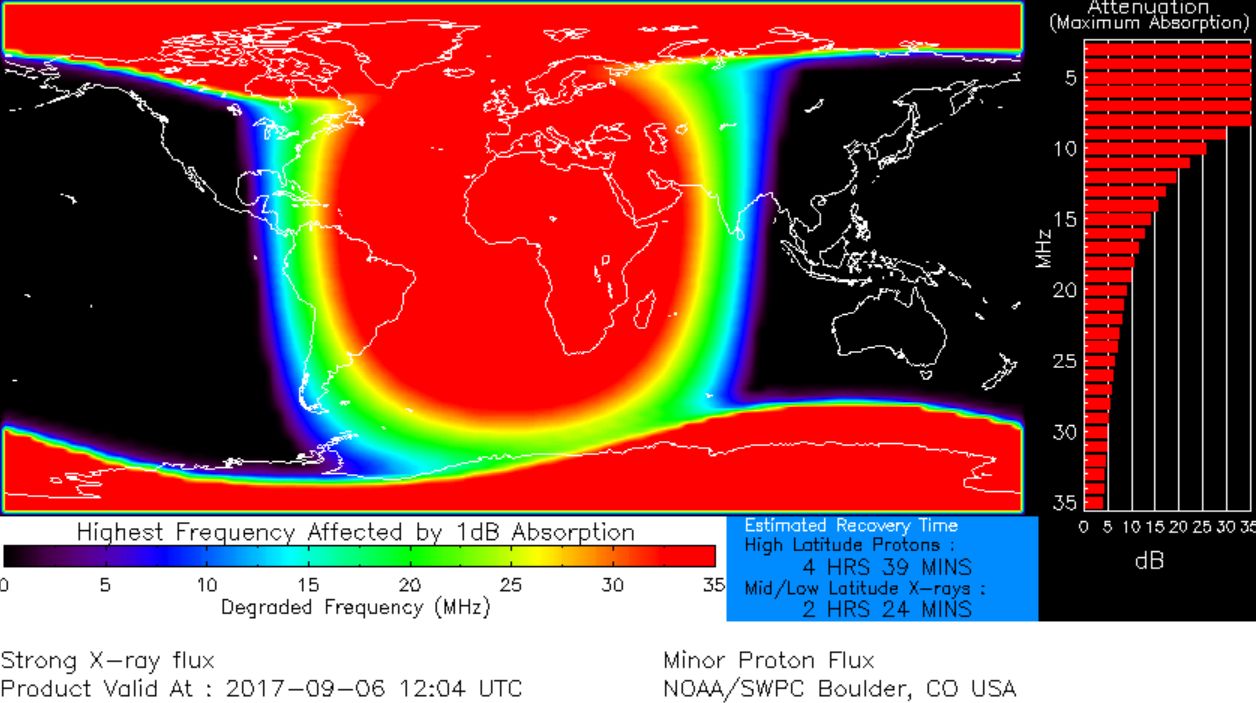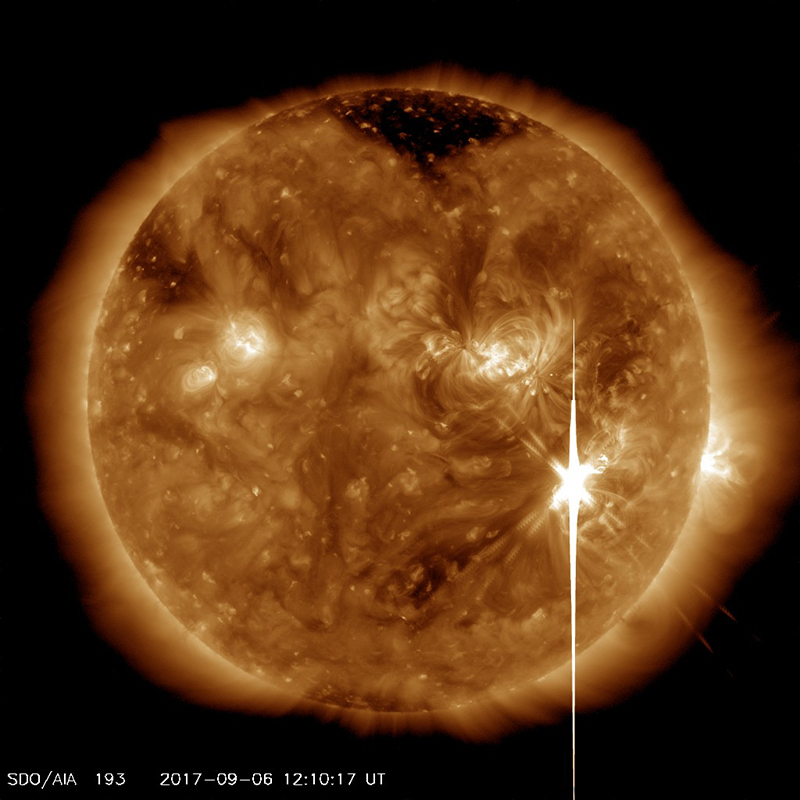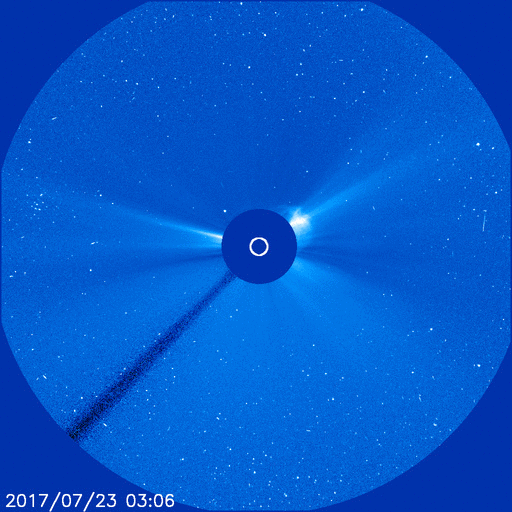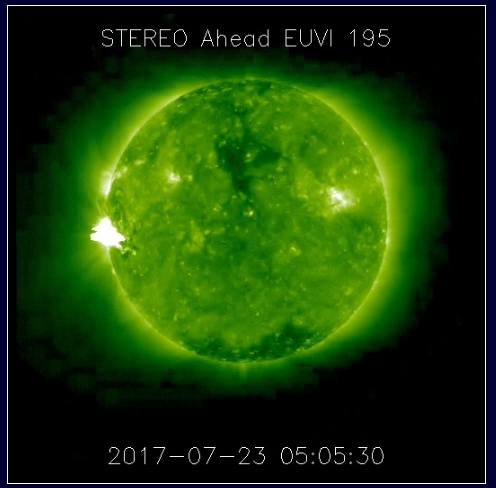
My wife turned to me as the credits rolled and asked, “Can you sue a production company for inaccurate science in a movie?”
“Hmmm… good point!” I said. “Unfortunately, though, I think it’s just called ‘being creative.’”
But that got me thinking.
Knowing not very much
We’d just sat through the Nicholas Cage disaster movie Knowing after heavily criticising the last hour of magical solar flares, prophecies, silly religious undertones and complete disregard for a little thing called “science.” Oh, and there were aliens. Who would have guessed?!
I would say that apart from these things, it was actually a pretty good film… but I’d be lying. Well, a little. I was actually quite impressed by the assorted disaster CGI and the acting (I’m glad Rose Byrne is getting some big roles, as I think she rocked in Damages), but generally, I was disappointed. I think I would have enjoyed it more if the director Alex Proyas didn’t have such a contempt for asking a science advisor for… I dunno… “advice.”
In fact, I’m not even going to bother researching whether there was a science advisor in the production crew or not, because either a) the rest of the crew didn’t listen to him/her, b) the science advisor was lying about his/her credentials or, c) the science advisor was stoned/drunk while on the set. Therefore, in my mind, there wasn’t a science advisor involved in the making of this film.
Putting the stupid plot, aliens (double-facepalm), Byrne’s character’s death and no science advisor to one side, I still cannot understand how they got solar flares so wrong.
Kaboom! Whoooshhh! Fizzzzz….
I’m not being funny, it’s as if Proyas didn’t bother to Google “solar flare,” just to check to see how solar flares really do work. Hell, go to the self-explanatory HowStuffWorks.com and do a search for “Sun.” If either one of these things were done during pre-production, the science may actually have been plausable.
In a totally forgettable scene, right toward the end of the movie, the uber-scary solar flare waits to be blasted at Earth. Cage gets on the phone to his Dad saying something like, “You know it’s been pretty hot lately? Well, it’s about to get hotter!” That’s an epic solar fail already. For some reason, the world had gotten hotter and everyone just shrugged it off as a warm October? I’m thinking the Sun would need to be whacking out a huge increase in energy, and in which case, those bumbling solar physicists or the N.O.A.A. (or “EN-Oh-Ay-Ay” as the cast painstakingly spells out) might have noticed?
I’m a stickler for realism in movies — so this is just a personal gripe — but why weren’t real images of the Sun from SOHO, TRACE, Yohkoh, Hinode or STEREO (let alone the countless ground-based solar observatories) used at all through the entire film? Instead, we see a strange blob of CGI graphic, shimmering like a corporate logo on computer screens, being referred to as “our Sun.” I’m pretty sure NASA would have happily provided some real pictures of “our Sun” if they were asked.
Solar flares or cosmic death rays?
But the best part of the entire movie is when we get hit by the super flare. Oh dear lord. If you weren’t terrified of the Sun before, you will be now. That thing can incinerate cities! It’s radiation can penetrate the Earth a mile deep! Holy cow, it is like a trillion-billion atomic bombs all going off at the same time!!!
Ah, I stand corrected. The production crew obviously did Google “solar flare,” but only read the bit where it says “…an energy of 100 million Hiroshima bombs is released…” That’s big right? Yep, Earth is toast!
Unfortunately, they didn’t read the bit which points out that this huge explosion occurs deep in the solar corona, 100 million miles away (that’s a long way away).
Also, they didn’t realize that even the biggest solar flares and coronal mass ejections (the latter wasn’t mentioned once for the whole movie) are deflected by our planet’s magnetosphere and thick atmosphere.
The only science that was mentioned was that the “flare” would hit our atmosphere, destroying our ozone, thereby killing everything on the planet. In actuality, if you watched the “flare” hit Earth, I’m not sure what the ozone had to do with anything! That “flare” was like a cosmic ray gun, ripping through the atmosphere and the Empire State Building (oh yes, there was a lot of “famous landmark shredding”) as if it was a hot knife slicing butter. I don’t think we need to worry about excessive UV exposure due to lack of ozone when Earth is on fire.
There’s a list of things that annoyed me about this movie, and I don’t have the patience to mock all points, but after my wife wondered about suing a movie for bad science, I got to thinking what damage movies do to the perception of science. Oh yes, I know it’s sci-fi, I know it’s “just a movie,” I really do know that it’s not real, but wouldn’t it be fun to have a disaster flick that uses some real science for a change?
Real science is sexy too
As I was discussing with solar physicist Alex Young in last week’s filming of the Discovery Channel 2012 documentary, the real threat of a massive solar flare is actually pretty daunting. Granted, the Sun isn’t about to fire a cosmic death ray at us (and let’s face it, the Sun isn’t going to do anything any time soon), setting the planet on fire, but the real physics would be awesome if used in a disaster movie.
Just imagine if we had a disaster movie that depicted a solar flare erupting on the surface of the Sun, just above a highly active region of clustered sunspots and stressed coronal loops. We could see real movies of intense magnetic activity, and then suddenly the blinding burst of electromagnetic radiation. This flare could be the biggest the Earth has seen in modern times. The X-rays from this event knock out solar observatories, stunning the delicate light-collecting CCDs in their cameras. These X-rays immediately slam into our ionosphere, causing a massive surge of electrons, blocking global communications. This may have the knock-on effect of causing our atmosphere to heat up and swell, increasing the drag on our orbiting satellites.
In the first moment when we see the flare, already we see global problems. But this would only be a precursor to something a lot worse…
I can imagine the scene in the perfect movie: Our brave, and smart solar physicists are looking at live data streaming from the Solar and Heliospheric Observatory (SOHO), a multi-instrument telescope sitting between the Earth and the Sun. They see an expanding bubble growing well beyond the disk of the Sun. An alert is sent out to the authorities; a CME is coming… and it’s headed straight for us… it will hit in a few hours. Cue the countdown to CME impact (the suspense will be tangible, you won’t be moving from your seat). But wait! Communications are patchy, the ionosphere just blocked the satellite link to the US President… time is running out! Bruce Willis, our hero heliospheric expert, steps in and volunteers to notify the president himself (with a gun in his pocket, as there’s bound to be an assassin or terrorist out there to shoot at).
Planetary mayhem
But the fun would really begin when the CME slams into our magnetosphere. The magnetic field of the CME and that of the Earth’s hit in such a way that they reconnect, flooding the magnetosphere with high energy particles. The Earth’s Van Allen belts become supercharged like radioactive reservoirs. Satellites are overcome by high-energy particle impacts. Global Positioning Satellites (GPS) go offline. Communication satellites suffer drag and literally start to drop out of the sky.
And it gets worse!
The solar particles are deflected toward the poles, but the solar storm is so intense, particles penetrate deeper, generating vast aurorae at low latitudes. Even equatorial regions would see vast light shows as the particles flood in from space. Although amazingly beautiful, this has yet another side-effect, our atmosphere just became a huge conductor, where vast currents flow as electrojets. These electrojets generate massive magnetic fields, in turn overloading our national grids.
We now have no power and no means to communicate. We’re blind and unable to function. Governments are overwhelmed. Imagine Katrina-scale events all over the USA… all over the world. Who can help? Suddenly the $2 trillion damage estimate made by NASA seems too small… after all, we’d be plunged back into the dark ages, how can you count costs in dollars when a financial system no longer exists?
Conclusion
I don’t expect movies to be totally scientifically accurate. However, if you are basing an entire storyline on one harbinger of doom, at least get that right.
A solar flare will hit Earth in the future, there’s even a very good chance that we’ll get hit by a “big one” that could cause some collateral damage. In fact, if we are very unlucky, a large solar storm could be considered “civilization ending.” Yes, asteroids pose a clear and present danger to life on Earth, but don’t forget the Sun, it has a history of getting angry when the Earth is in the orbital firing line.
If that isn’t a great plot for a disaster movie, I don’t know what is.
